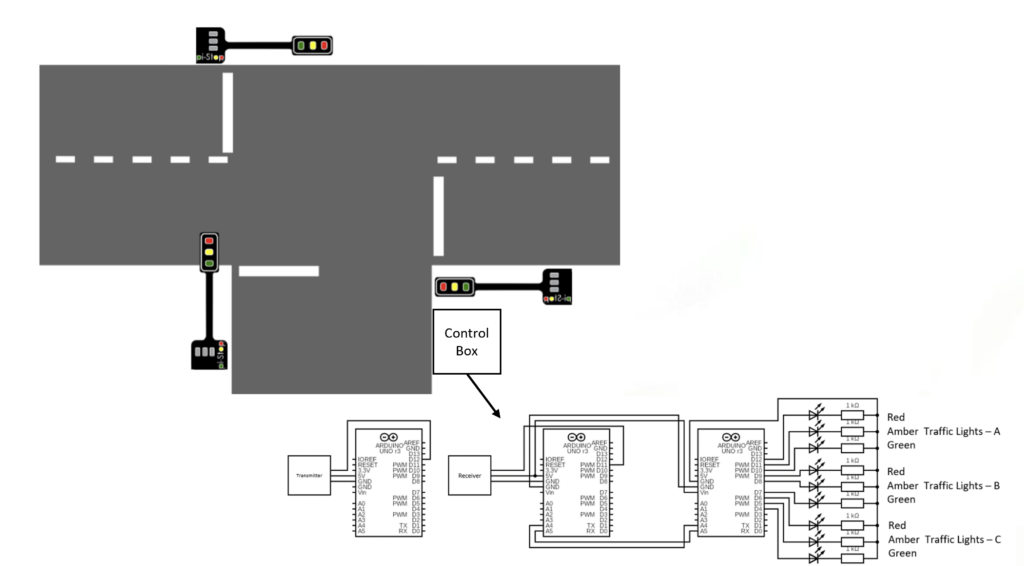Each year, Malta records around 41,000 requests for an ambulance service [1], more than 6,000 calls to the Civil Protection Department [2] and around 263,000 calls requesting police assistance [3]. Although around 80% of these calls are hoaxes or are non-true emergencies [3], timing is crucial when there is a real emergency, as even an extra minute could have disastrous consequences.
Conventional traffic light systems pose a significant challenge to emergency vehicles, slowing their response time and potentially endangering lives. This work proposes an upgrade to the conventional traffic light system to facilitate the movement of emergency vehicles in their daily operations. The proposed system seeks to aid emergency vehicles by reducing their effective response time, allowing them to cross through intersections controlled by traffic lights in a safer manner.
The main aim of this project was to change traffic lights from red to green automatically when an emergency vehicle would be approaching. This would ‘flush out’ any vehicles waiting at the intersection and, thus in the path of the emergency vehicle, bringing the traffic in the other roads to a halt to guarantee a safe transition through the intersection. The proposed system would be operated and controlled by means of a radio communication link between the emergency vehicle and the traffic lights system.
The emergency vehicles would be equipped with a transmitter (see Figure 1) operating in the 433MHz ultra-high frequency (UHF) licence-free band. As soon as driver of the emergency vehicle should switch on its warning lights and siren, the transmitter would transmit a code that would be received and decoded by the receiver set at the traffic-light-intersection control box. Upon receiving and decoding the information, the receiver could then carry out the transitional process of turning all the traffic lights red, except the one from where the emergency vehicle would be approaching. Should the lights be already on green. it would not change. Once the emergency vehicle has passed the intersection and the transmission has stopped, the traffic lights would resume to their normal cyclic loop.
In this work, a working prototype of the proposed system was implemented around the Arduino UNO R3, which featured an ATmega328P microcontroller. This is a programmable device used to control and automate electronic circuits. In addition, a radio-frequency transmitter and receiver module kit was used for the communication link.
As shown in Figure 1, all the traffic lights were connected to the slave board through ports D4 to D10 and D12 to D13. The slave board was powered by the master board and the 5V supply of the master board was connected to the Vin of the slave board. The slave board and the master board communicated between each other using analogue ports A4 and A5. The receiver was also set to interface with the master board. Digital port D11 was used for the communication path between the master board and the receiver, while it was also powered by the master board.

Figure 1. The control box for traffic lights junctions and emergency- vehicle equipment, including the Arduino Uno for the transmitter (left) and the Arduino Uno Master Board and Arduino Uno Slave Board (right) recommendation system
Student: Isaac Bartolo Burlò
Supervisor: Prof. Inġ. Owen Casha
